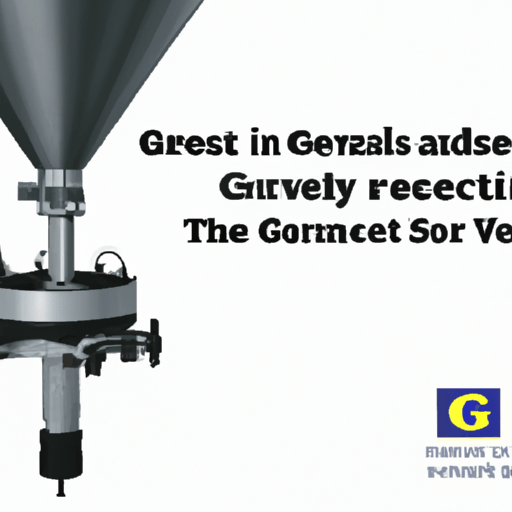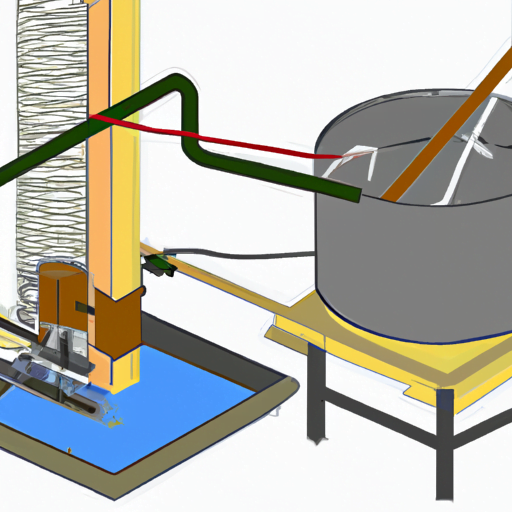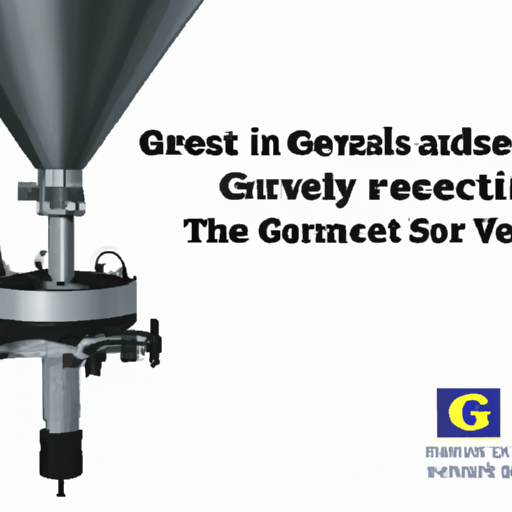So, you’re interested in off grid living and you’ve probably heard about the gravity feed system. It’s a popular choice for those who want to live self-sufficiently, but it’s not without its drawbacks. In this article, I’ll be discussing the disadvantages of using a gravity feed system, so you can make an informed decision about whether it’s the right choice for you.
One major drawback of a gravity feed system is the limited water pressure it provides. Since the water relies solely on gravity to flow, the pressure can be quite low compared to other systems. This can be frustrating when you’re trying to take a shower or wash dishes, as the water may not come out with enough force to effectively clean. However, if you’re willing to make some adjustments to your lifestyle and be more conscious of your water usage, this might not be a dealbreaker for you.
Another drawback is the need for elevation. In order for the gravity feed system to work effectively, your water source needs to be located higher than the area where you want to use the water. This means that you may have limited options when it comes to the location of your off grid home. You’ll need to find a place where you can access a reliable water source at a higher elevation, which can be challenging depending on your geographical location.
Lastly, the gravity feed system requires regular maintenance and monitoring. Since the system relies on gravity to move water, any blockages or leaks can disrupt the flow and cause issues. You’ll need to regularly check for any obstructions in the pipes, as well as ensure that the water source is free from debris. Additionally, freezing temperatures can pose a problem, as the pipes may freeze and cause damage to the system. Proper insulation and monitoring will be necessary to avoid these issues.
In conclusion, while a gravity feed system can be a viable option for off grid living, it’s important to consider the drawbacks before making a decision. The limited water pressure, need for elevation, and required maintenance are all factors to take into account. However, with proper planning and adjustments, you can overcome these challenges and enjoy the benefits of living off grid. To learn more about the gravity feed system and its advantages, keep reading our article.

Introduction
If you’re considering off-grid living or looking for an alternative water supply system, you might have come across the term “gravity feed system.” While gravity feed systems have their advantages, it’s important to be aware of the drawbacks that come with using this type of system. In this article, we will delve into the disadvantages of a gravity feed system, exploring the challenges it presents and discussing potential risks and safety concerns. Additionally, we will explore alternative water supply systems, environmental considerations, and financial implications. So, let’s dive in and explore the drawbacks of using a gravity feed system for your water needs.
Understanding Gravity Feed Systems
Definition of a gravity feed system
A gravity feed system is a type of water supply system that relies on the natural force of gravity to deliver water to a desired location. It involves using a water source that is positioned at a higher elevation than the location where the water is needed. By exploiting the force of gravity, water from the source flows downhill through pipes and reaches its destination.
How gravity feed systems work
In a gravity feed system, water flows from a higher point to a lower point due to the force of gravity. This movement is facilitated by a series of pipes and fixtures. The water source, typically a well or a water tank, is situated at a higher elevation, which creates the necessary pressure for water to flow downward. Gravity causes the water to move through the pipes and reach its destination, whether it’s a sink, shower, or any other water outlet.
Advantages of Gravity Feed Systems
Before we delve into the drawbacks of using a gravity feed system, it’s crucial to acknowledge the advantages it offers. Understanding these benefits will provide important context for evaluating the disadvantages.
Improved efficiency
Gravity feed systems are known for their efficiency. Unlike electric pumps or other water supply systems that rely on mechanical mechanisms, gravity feed systems simply harness the natural force of gravity. This means there is no need for electricity or fuel to power the system, resulting in reduced energy consumption and lower utility bills.
Lower energy consumption
As mentioned earlier, gravity feed systems require no additional energy input, making them highly energy-efficient. By relying solely on the gravitational force, these systems contribute to minimizing your carbon footprint and can be a sustainable choice for off-grid living, reducing your reliance on traditional energy sources.
Less maintenance required
Another advantage of gravity feed systems is the reduced maintenance required. Without complex mechanical components, such as pumps or motors, there are fewer parts to break down or malfunction. This translates to lower maintenance costs, fewer repairs, and less downtime.

Drawbacks of Using a Gravity Feed System
While gravity feed systems offer numerous advantages, they also come with a set of drawbacks that must be considered before implementing such a system. Let’s explore these disadvantages in detail:
Dependence on height difference
The effectiveness of a gravity feed system is directly dependent on the height difference between the water source and the point of use. The greater the vertical distance, the better the water pressure. However, this reliance on height difference can be challenging in areas with flat terrain, as achieving a significant elevation difference may not be feasible.
Limited water pressure
Gravity feed systems are prone to providing lower water pressure compared to pressurized systems. This can result in a less satisfying shower experience or slow-filling toilets. If you value high water pressure, a gravity feed system may not be the best choice for you.
Inconsistent water flow
Since gravity feed systems rely solely on the gravitational force, water flow can be inconsistent, especially if the height difference is minimal or if there are variations in the source’s water level. This fluctuation in water flow can be frustrating, particularly when performing tasks that require a steady and constant water supply.
Difficulty in multi-story buildings
Gravity feed systems are not well-suited for multi-story buildings. As the water source needs to be at a higher elevation than all the outlets, it becomes increasingly difficult to maintain sufficient water pressure on higher floors. Implementing a gravity feed system in such buildings would require additional engineering and complex plumbing configurations, adding to the overall cost and potential maintenance issues.
Challenges in complex plumbing systems
If your property has a complex plumbing system with multiple branches and fixtures, a gravity feed system might not be the most practical choice. The gravity flow of water can be impeded by bends, twists, or lengthy pipe runs. This can result in uneven water distribution, clogs, or reduced flow in certain areas of the plumbing network.
Implications for Off-Grid Living
Gravity feed systems in off-grid locations
Off-grid living often involves seeking alternatives to traditional water supply systems, making gravity feed systems an attractive option. However, the drawbacks we’ve discussed earlier need to be carefully considered in an off-grid context. The availability of suitable elevation differences and the requirement for consistent water flow become critical factors when choosing a gravity feed system for off-grid living.
Impact on water supply and usage
Gravity feed systems can have implications for water supply and usage in off-grid locations. Depending on factors such as rainfall patterns, geographic characteristics, and water storage capacity, relying solely on gravity feed systems may limit the amount of water available for use. This can lead to water conservation practices and a heightened awareness of water consumption.
Potential Risks and Safety Concerns
Need for proper filtration and purification
Gravity feed systems rely on natural water sources, such as wells or rainwater collection, which may contain impurities, sediment, or harmful substances. Proper filtration and purification systems must be installed to ensure that the water is safe for consumption. Neglecting this crucial step can put your health at risk.
Risk of contamination
Without proper precautions, gravity feed systems can be susceptible to contamination. Since these systems often rely on exposed water sources, such as open wellheads or rainwater collection tanks, there is a risk of external pollutants, such as debris, insects, or animals, entering the water supply. Regular inspection and maintenance of the water source and plumbing infrastructure are necessary to mitigate contamination risks.
Importance of regular maintenance
Although gravity feed systems require less maintenance compared to other water supply systems, regular maintenance is still crucial to ensure their optimal performance. Checks for leaks, blockages, and pipe deterioration are essential to prevent water loss, damage to the system, and potential health hazards.
Alternative Water Supply Systems
Considering the drawbacks of gravity feed systems, it’s important to explore alternative water supply systems that might better suit your needs. Here are a few options to consider:
Pressurized water supply systems
Pressurized water supply systems utilize pumps to generate adequate water pressure. These systems are designed to provide consistent water flow across different levels and can overcome the limitations of gravity feed systems. However, they require a reliable power source and increased energy consumption, which may not be ideal for off-grid living.
Pumps and electric water systems
Electric water systems, such as jet pumps or submersible pumps, are capable of delivering higher water pressure and flow rates. These systems are commonly used in conventional homes and provide a reliable and consistent water supply. However, they do come with higher energy consumption and maintenance requirements.
Rainwater harvesting systems
Rainwater harvesting systems collect rainwater from rooftops or other surfaces and store it for later use. These systems can be combined with gravity feed systems to maximize water availability. Rainwater can be filtered and purified to ensure its safety, making it a sustainable and environmentally-friendly choice. However, the effectiveness of rainwater harvesting systems is highly dependent on the local climate and rainfall patterns.
Environmental Considerations
Impact on water conservation
Gravity feed systems, by virtue of their reliance on gravity and natural water sources, encourage water conservation. By utilizing the available water and minimizing energy consumption, these systems contribute to reducing water waste and supporting sustainable living practices. However, this also means that water usage may need to be closely monitored and limited in order to ensure long-term availability.
Use in sustainable living practices
Gravity feed systems align well with sustainable living practices, as they require little to no reliance on traditional energy sources. By harnessing gravity’s force, these systems minimize the environmental impact associated with energy consumption, contributing to a greener lifestyle. Additionally, the use of natural water sources and rainwater harvesting can further enhance sustainable water management.
Financial Considerations
Cost comparison with other water supply systems
When considering any water supply system, it’s essential to evaluate the associated costs. Gravity feed systems have the advantage of lower installation costs since they require no additional mechanical components. However, factors such as terrain characteristics, plumbing system complexity, and water storage capacity may increase the overall cost of implementation. Comparing these costs with those of alternative systems will allow you to make an informed financial decision.
Long-term savings and expenses
While gravity feed systems offer potential savings in terms of energy consumption and maintenance, they also involve long-term expenses. Regular maintenance, replacement of components, and potential repairs can add to the overall expenses over the system’s lifespan. Evaluating these long-term costs against the advantages and disadvantages of alternative water supply systems will help you determine the most cost-effective option for your specific situation.
Conclusion
In conclusion, a gravity feed system can be a viable option for off-grid living or as an alternative water supply system. However, it’s important to consider the drawbacks it presents. From limitations in water pressure and flow to challenges in complex plumbing systems, these factors can significantly impact the system’s performance and your overall satisfaction. Furthermore, potential risks and safety concerns, along with financial considerations, should be carefully evaluated before deciding on a gravity feed system. Ultimately, understanding the disadvantages, exploring alternative water supply systems, and considering the environmental and financial implications will enable you to make the best choice for your water needs.




